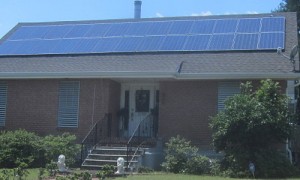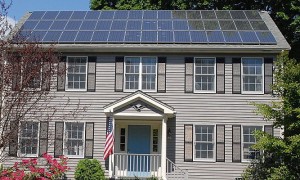It’s no joke. Temperatures can really soar in Las Vegas. Your AC unit literally means the difference between enjoying your home in comfort or being miserable when the mercury rises above 100 degrees, as it regularly does. With heat that extreme, what should you consider when shopping for an AC unit for your home?
See Your SEER
The Seasonal Energy Efficiency Ratio (SEER) measures the cooling efficiency of your AC. The higher the SEER number the more efficiency there is in converting electricity into cooling power. According to U.S. Department of Energy standards, the minimum SEER rating allowed today is 13. Central air conditioners with ratings of 13 or greater will show an Energy Star label. Some high efficiency units on the market today go as high as 23. In contrast, older systems typically rate 10 or below.
Size Up Your Situation
Getting a unit too large for your space will cause short cycling, meaning the compressor won’t run long enough at one time. Frequent cycling impedes proper cooling and increases operating costs. On the other hand, if your system is too small, it will get overtaxed and run up power bills without cooling your home to a comfortable level.
The amount of energy required to pull heat from the air is measured in BTUs (British Thermal Units). Convert BTUs into tonnage in order to determine the appropriate AC unit size needed for your home. Your original builder’s floor plan should provide measurements. If you don’t have it, measure all rooms excluding closets, basements, and attics that do not require air conditioning, convert the square footage of each room to BTUs, add them up, and convert this number for whole house BTU.
- 100-150 sf = 5,000 BTUs
- 150-250 sf = 6,000 BTUs
- 250-350 sf = 7,000 BTUs
- Count 4,000 BTUs for kitchens, 1,000 for laundry or bathrooms
Divide whole house BTU by 12,000 to determine the tonnage or use an online calculator.
Once you know the size of the AC unit your home needs to cool comfortably and efficiently, use that information when shopping or when checking a system supplied by your contractor. Remember that the model number of the unit will always contain the number that indicates its tonnage.
Place for Performance
Your AC unit should have enough space around it to allow for any necessary repairs and routine maintenance. The unit’s condenser needs an unblocked airflow. You’ll also want to consider placement so the noise won’t become a nuisance for your neighbors. Remember, thermostat location also plays a role – make sure no heat sources are near enough to affect thermostat sensors.
These rules also apply when looking for a window AC unit to cool an apartment or small dwelling. Unlike central air conditioning’s SEER rating, window ACs receive only an EER (Energy Efficiency Ratio) rating, which measures the ratio of cooling output to electrical power input. Follow recommended U.S. Department of Energy guidelines for EER, unit size in relation to dwelling space, and placement of the unit. Your contractor, HVAC specialist, or home store can also assist you with researching, purchasing, and installing an AC unit in your home.
In the hot desert climate of Las Vegas, having cost effective, functional air conditioning in your home is one thing on which you won’t want to gamble.
[cf]skyword_tracking_tag[/cf]






